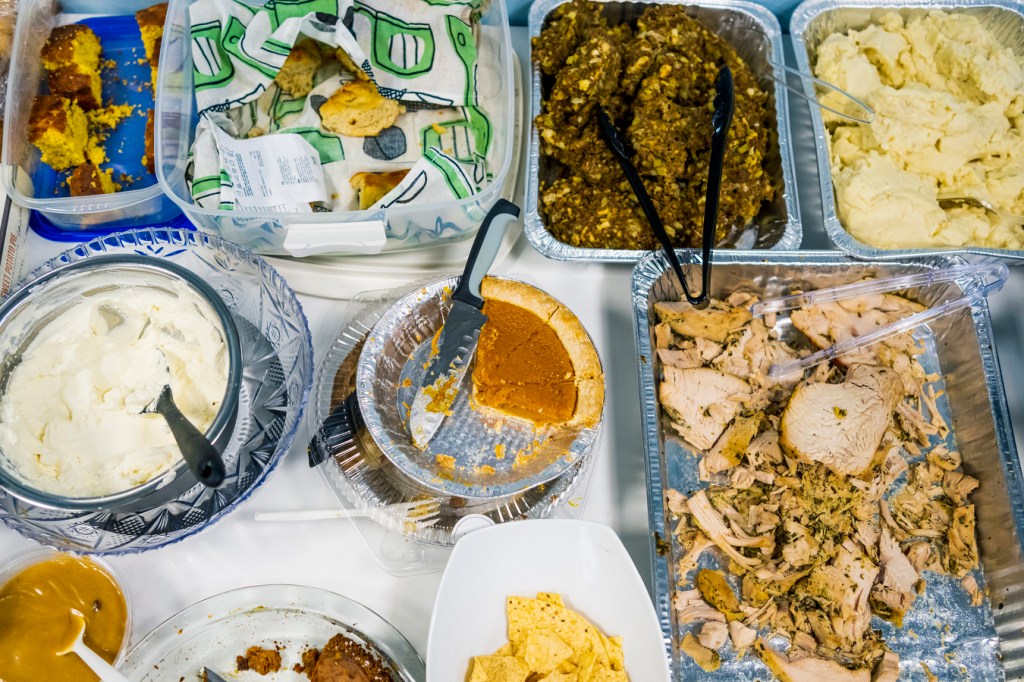How to prepare the perfect Thanksgiving turkey—and avoid food poisoning

Thanksgiving brings families together, including the young and the old—two populations that are most vulnerable to foodborne illness, says Darin Detwiler, a food policy and technology expert at Northeastern.
And those who cook for them on the holiday are usually less experienced with preparing turkey, especially in such large quantities.
When these factors come together, “you have a lot of things that can go wrong,” Detwiler says.
The biggest risk is likely salmonella. Certain strains of salmonella thrive in turkey, especially when it is not stored and cooked properly. In a recent study, the CDC found that between 1998 and 2018, most of the Thanksgiving-related salmonella cases likely came from turkey.

Luckily, there are steps you can take to keep yourself and your family safe when preparing your Thanksgiving turkey.
Food safety starts as soon as you bring the turkey home, Detwiler says. Frozen turkeys should be stored in the freezer, and turkeys that are not frozen should be stored in the refrigerator, even during the thawing process.
Thawing is essential, Detwiler says, to make sure the turkey is cooked evenly and all of the pathogens are destroyed during the cooking process.
However, “there are people who leave a turkey out on a counter for days and days,” he says. “The reality is, you need to refrigerate it.”
Thawing outside of the refrigerator is faster—turkey takes 24 hours to thaw in the refrigerator for every four to five pounds—but leaving it on the counter puts the turkey in the temperature “danger zone” of 40 to 140 degrees, where “pathogens grow in numbers,” he says.
Once you have thawed your turkey, don’t wash it, Detwiler says, regardless of what your cookbook may say.
“What it’s going to do, it’s going to spread pathogens, it’s going to splatter,” he says. “You’re going to end up getting more pathogens spread around your kitchen.”
In fact, anything raw meat touches needs to be cleaned. That is why it’s important to clean cutting boards and knives between use, along with countertops, during the cooking process.
“Cross contaminating is the number one way that people get sick during the holidays, because they’re not washing their hands and they’re contaminating from some raw product to something else,” he says. “They’re using plates over again, knives over again, surfaces over again.”
This principle even extends to the stuffing, which poses a risk when it’s cooked inside the turkey. “If you’ve stuffed the bird, and you cook it until the stuffing’s done, then the bird is going to be overcooked. And if you cook it until the turkey’s done, then the stuffing is going to be undercooked,” Detwiler says. “And what happens is salmonella is present in the cavity of the turkey and can contaminate the stuffing.”
In order to avoid this, he says, stuffing should be cooked separately from the turkey, up to 265 degrees fahrenheit.
Once you’re done cooking, don’t leave the food out for too long. Food needs to be put away after two hours, even if it’s still hot, and stored in small containers, as large vats of food will insulate themselves. On the same note, putting a whole turkey back in the fridge is not safe, Detwiler says; it’s best to remove the meat and store it that way.
Do all this, and you won’t have to worry about getting your grandmother sick.
“You don’t want this to be a memorable Thanksgiving because of all the people that got sick,” he says. “You’d rather have it be memorable for other reasons.”
For media inquiries, please contact media@northeastern.edu.






